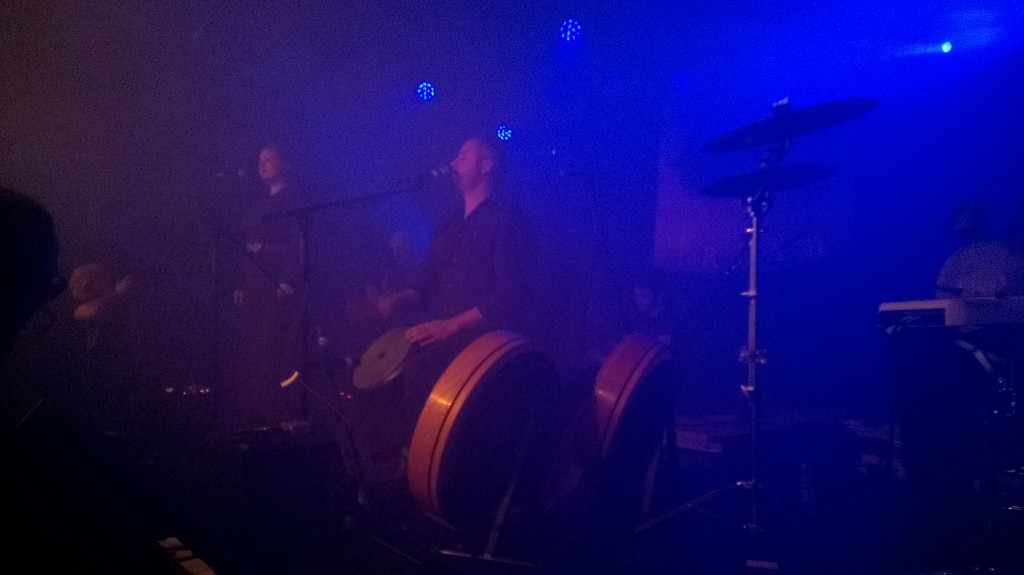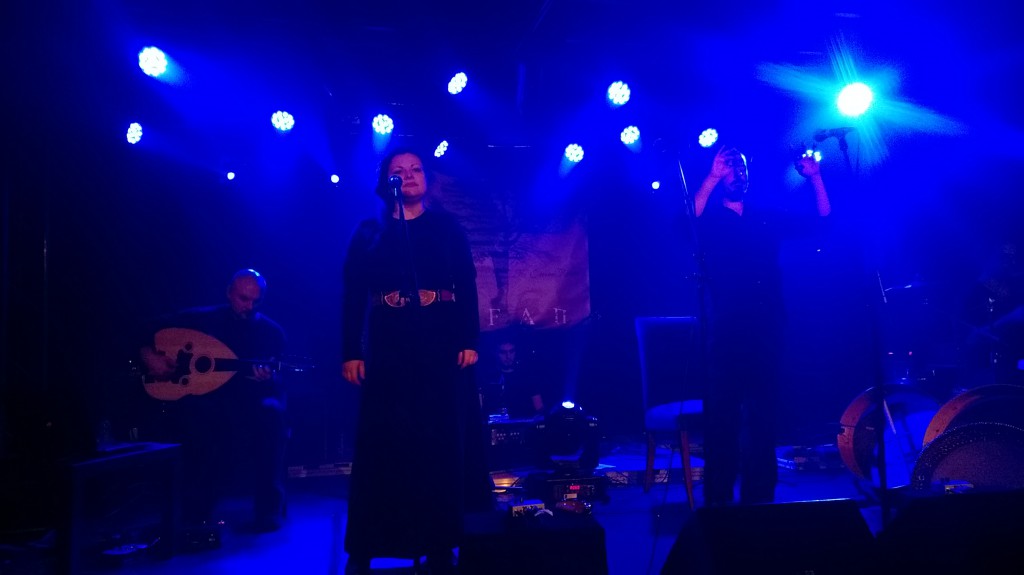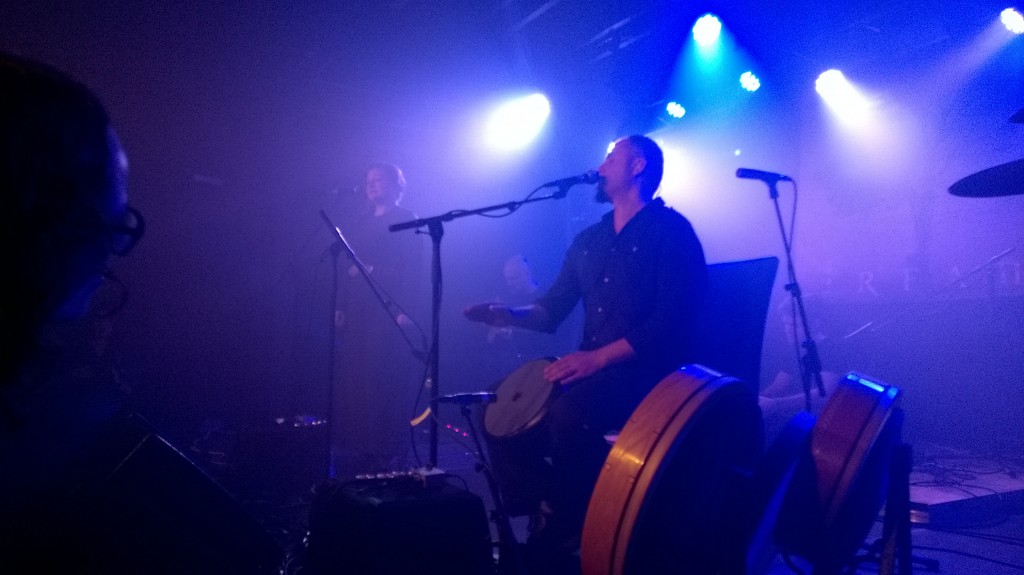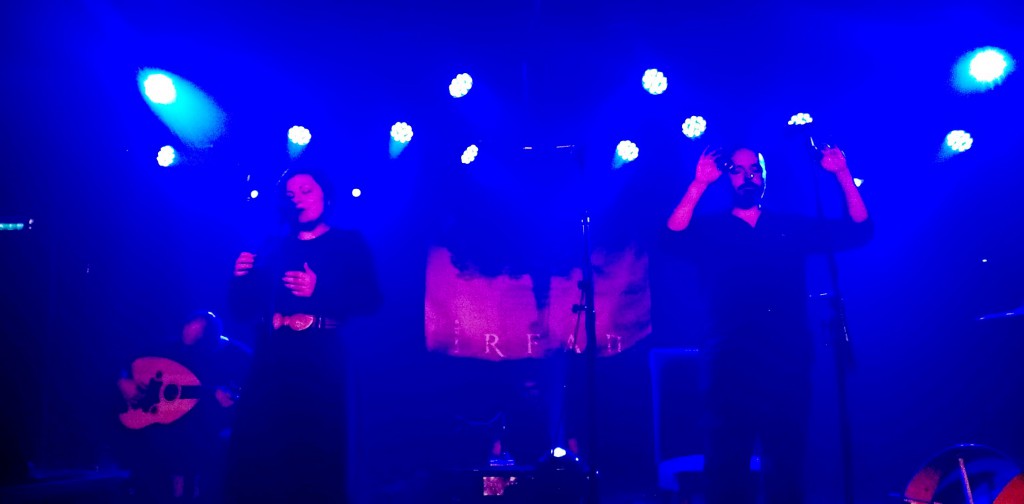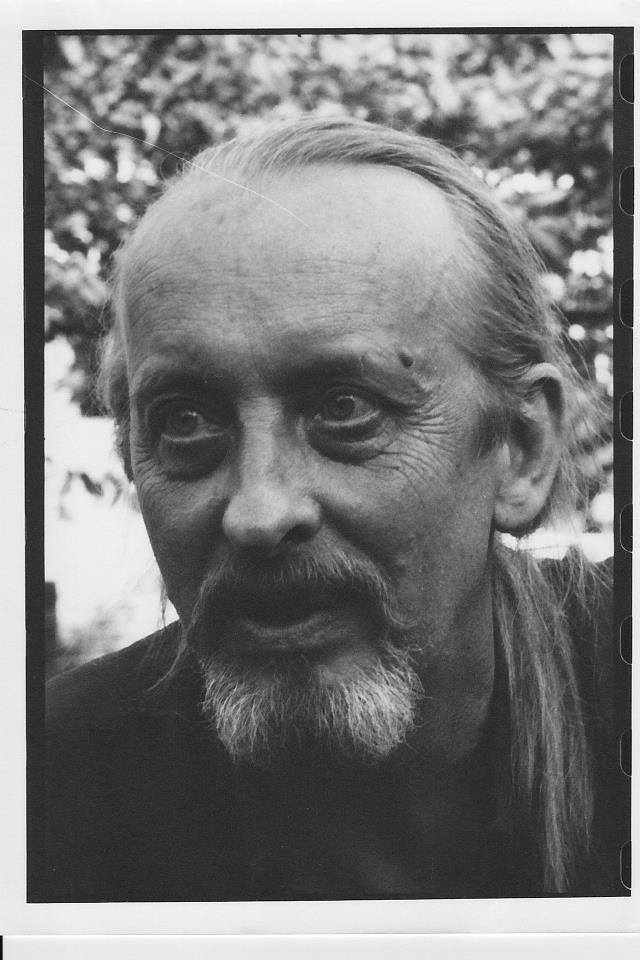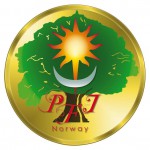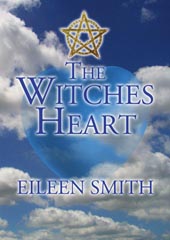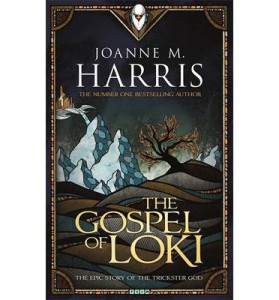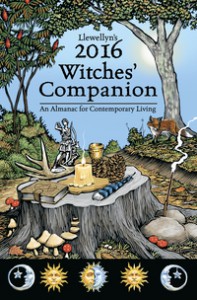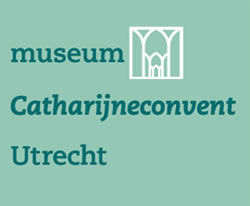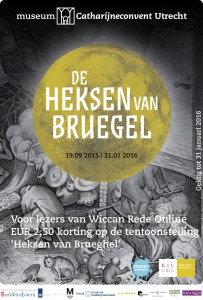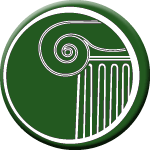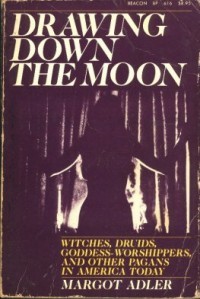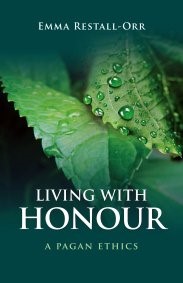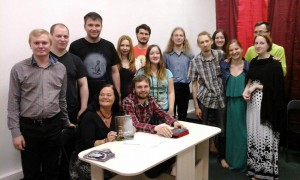by Dr. Dmitry Galtsin, St. Petersburg, RUSSIA July 5, 2015
– Most Russian Pagans know you as a Pagan activist, a PFI international coordinator and a Gardnerian Priestess. Less is known here about your interfaith initiatives and your role in academic study of Paganism. Could you expand on these aspects of your activity?
I’ll start with interfaith first. Five years ago in the Netherlands there was not much interfaith work going on. I remember one of the first interfaith meetings I attended that went on in synagogue, with some foreigners present and a welcoming speech addressed to “Christians, Buddhists, Muslims, Jews and whatever”. I introduced myself as being English, so a foreigner, and a high priestess of whatever. 🙂
The first thing I learned about interfaith in the Netherlands is that people were not really aware of what Paganism was about. Wiccans and Pagans in the country were a minority group which no one really bothered about, and that’s why for most part they didn’t bother about interfaith. Another thing I learned from the very first interfaith symposium was that the famous so called Dutch tolerance was most often indifference. Its motto is “so long as it doesn’t involve me, I really don’t care what you do”. But after Theo Van Gogh’s murder we lost our innocence, and other events, including the financial crisis, made us question many things which we had taken for granted earlier. An anti-Islamic and anti-immigrant sentiment grew along with right-wing parties becoming more and more popular. This sentiment was based on fear and ignorance. We usually fear what we don’t know. Working with United Religions Initiative (URI) I also noticed, that some people still harbour very strong biases against Pagans. When I mentioned my involvement with Pagan Federation International, some people would ask: “Are you Pagan?” and when I answered in the affirmative, would walk away. That is the moment when indifference in matters of religious pluralism gives way to fear. So I find that in the interfaith work it is sometimes more appropriate to call yourself not Pagan, but a humanist, because Paganism is still not what many people are comfortable with.
Via United Religions Initiative I have also become more involved in politics. For example we were invited recently to join a group concerned with Religious Freedom. This has been initiated by the Dutch Ministry of Foreign Affairs. This consultative group is concerned with humanitarian aid as well, and I have always said that, while helping people abroad, internationally, it is important to be aware that there are many socially insecure people, domestically, who need help as well.
Speaking about the academic study of Paganism; for a long time there have been no visible representatives of Pagan point of view in the Netherlands. The University of Leiden was probably one of the first institutions here where modern Paganism started to be discussed from an academic point of view. On the curriculum of the World Religions university course, taught there, there were “Antique Religions” alongside the four world faiths of Christianity, Judaism, Islam and Hinduism. At that time Wicca was classed under “Antique Religions” and it also included discussions of modern (neo) Paganism. I once went to the open day at Leiden University in mid-2000s, and the open lecture was devoted to “Gospel of Aradia” by Charles G. Leland. The lecturer, prof. A. F. De Jong, represented a “middle ground” between accepting Leland’s book as totally fiction devised by Leland himself, or a collection of genuine Italian practices. De Jong argued that while the presence of Leland’s ideas which is evident, Leland really looked into the existing practices he encountered whilst travelling in Italy. Later, modern Witchcraft/Wicca and Neo-Paganism have become subjects of a separate university course at Leiden (also within World Religions major), so there has been a significant change in approach in recent years. There is also now the classification of “New Religions”
I also came into contact with the academic work of Ronald Hutton, Vivianne Crowley, Jo Pearson and Melissa Harrington, who deal a lot with Paganism and Wicca in an academic context. Via the journal “Wiccan Rede” (established in 1980) we also published reviews. One significant book was by Emma Wilby “Cunning-Folk and Familiar Spirits: Shamanistic Visionary Traditions in Early Modern British Witchcraft and Magic” which is a study of early modern cunning folk practices[1].
Gradually I became aware of the uneasy problem the academic world is having with insider/researcher relations. It became especially topical after Marcus Davidsen’s article “What’s wrong with Pagan Studies” (2012)[2]. I have given lectures on Wicca and Paganism as an insider, practitioner at different academic conferences throughout Europe. I learnt, that, as in the interfaith, I have to be somewhat careful about representing my background, for very often representing yourself as Pagan undermines your credibility in a biased audience.
In order to bridge the gap between researchers and practitioners, Leon Van Gulik and I set up the Pagan/Academic European Network (PAEAN) in 2013 as a Facebook group[3]. The emphasis was on Europe as the name suggests. As people who joined come from places as far away as Great Britain, Turkey, Russia and Israel, we later chose the format of online conferences. The goal was to allow the researchers to meet the practitioners of modern Paganism and give the practitioners access to the academic discussion of Paganism.
I also have an account on academia.edu as an independent researcher, where I share my articles in Pagan Studies[4].
– You are in a unique position to observe the development of Pagan communities in Europe. What, do you think, are the most interesting new features of Paganism/Heathenism that have emerged in the last 15 years?
The two things which have greatly influenced Paganism in this period have been the development of the European Union and the “sense of belonging”. The question is how can people find their identities, their sense of belonging amid greater mobility of our times and the process of political and economical integration. While Internet gives people new connections and communication, it also makes them more fragmented, for they stop meeting each other physically. The “Witches Café” meetings which we were holding from 1997 in the Netherlands, where people come to talk about Wicca and Witchcraft on “neutral” public ground, have dwindled in the 2000s due to the fact that people lost the need to get together. Now, though, there is again a growing interest in “devirtualization”, and in meeting each other in person.
The PFI which evolved in the late 1990s – early 2000s – was evolving first along my personal Wiccan contacts throughout Europe (Germany, Italy, Spain, Czech Republic), and Internet played a huge role in creating the initial network. The evolving of what is now sometimes called “Wiccanate” or a wiccan approach has started to take place: people found out that Wicca offers a panoply of simple and effective instruments that one can easily imitate (creating a circle, invoking quarters, adapting Wiccan tools etc.), and adapt for one’s purposes or traditions. But at the same time I saw at the various PFI conferences that people also have an urge to go deeper into their respective local traditions. The Czech Republic was an especially good example of people very carefully looking at their Slavic roots. The Wiccan youth in the Czech Republic is, for instance, incorporating Slavic deities and Slavic ritual patterns in Wiccan ritual.
As a practitioner I have seen that there has been a gradual emergence of what one could call “Western European-style Paganism” with a great emphasis on Goddess spirituality and the reverence for Nature and “Eastern European-style Paganism” with a great emphasis on male leadership and heroicism. At the same time, the Eastern and Central Europe where the latter style is more present, Paganism (or Heathenism, for that matter) has been long associated with living traditions of “superstition”, “black magic” or even “devil-worship”. It differs greatly from the somewhat more “light” image of Paganism coined in the West in XIX and XX centuries.
The emergence of World Congress of Ethnic Religions in 1999 (now ECER European Congress of Ethnic Religions) revealed that the “ethnic” view may be very non-tolerant to what they perceive as “imported” religions – and Wicca most certainly falls into that category in their eyes. I think we must be wary of Pagan fundamentalism, which is focused on creating rigid identities which may under certain circumstances beget nationalism, racism and bias.
While European Union seeks to create large “overarching structures”, it fails to appreciate identities which bind people to their respective localities and cultures. We get something simplistically unified instead of a united Europe “of the hundred flags”. There is lack of respect as to how people identify themselves. The trick of labelling, for instance, Muslims, living in Europe, “Euro-Muslims”, is both ineffective and insensitive, as if they need the legitimizing “Euro-” prefix to be accepted. There is a fear that instead of bringing people together modern integration makes them more fragmented.
Paganism has moved to the stage of its development where it should be brave enough to admit that many grand Romantic images were simply not true. The idyllic myths of peaceful Celts, or heroic ancient barbarians, or matriarchy, or the Burning Times, must be held up to the light of day for examination (and here’s where academic research is actually helping Pagans), even though many paths may hold fast to these myths. The evolution is what the Pagan path is about and we can’t stick with a certain “tradition” or “belief” as an unshakable dogma if our experience battles against it. Paganism is above all organic and experiential.
After “The Triumph of the Moon” (1999) by Ronald Hutton saw the light, Merlin (who co-founded Silver Circle with me) wrote a sort of replique to Hutton’s notion of cunning folk (Emma Wilby actually read Merlin’s article and led her research in the same direction). I think Merlin’s article was named just that – “The Cunning Folk”. Studying the cunning folk material we found out that a lot of seasonal lore (including many ideas behind the Wheel of the Year, or names for full moons in different months) could have been picked by Gardner from his native Lancashire, where very strong Danish influence persisted into the Middle Ages. And while we don’t find in the folklore the notion of traditional covens of thirteen or naked rituals, or surviving Pagan religions, we do see the archetype of a “cunning man/woman”, which is actually very common for all regions of Europe. The “mythic-poetic ideal” as Merlin called it, is that which binds us to modern Wicca and was based on that, even if it wasn’t exactly what the real folklore was.
– You have a long experience of working with Russian Pagans and Heathens. What is peculiar about Russia Pagan-wise, what things are different here, from the Western European point of view?
Throughout Europe I see a lot of commonalities in folk traditions, which center around food, home and the hearthfire, Rites of Passage, music and “women’s lore”. The same is true of Russia. For me the heart of Wicca, as well as Paganism, is really in the kitchen. The down-to-earth, local traditions define how we live together, and that’s what connects various localities.
It is important that we view the ever-changing contexts of different cultural practices and motives we are using as Pagans without trying to force Romantic notions on them. While “Celtic”, “Teutonic”, or, for that matter, “Slavic” Romantic narratives were vital and fruitful at the start of exploring people’s forgotten heritage, now they have to give way to more accurate and more local research, if we want to be truthful. Though you’d be probable told a lot about “Celtic” ornamental patterns or symbols in, say, Ireland, or “Teutonic” symbols in Germany, chances are that the same patterns and symbols will be recognized as “Slavic” in other countries. Nature doesn’t have ethnic or national borders, and neither does spirituality. It is impossible to capture in a container of a certain isolated “tradition”. Practices and symbols travel – and that’s why the symbol of the river is so important. I found that the European arterium of Danube-Rhine was vital in the spread of cultural material across Europe, and I’m sure this is also true about Russia with its great rivers.

(College of Thelema in St. Petersburg hosted a meeting with the head of the Pagan Federation International Morgaine Sythove. Thank you Morgana for the interesting and informative presentation, and Dmitry Galtsin -for the excellent translation – from Facebook. Meeting on July 4, 2015)
– Wiccan community in Russia has been visibly developing for the last five years. Is there anything about your communication with Russian Wiccans you’d like to share?
It may sound as a cliché, but stay open-minded. Explore your traditions, explore the world around you, find information. And use it.
When I was in America last year I heard a couple of people saying that “Wicca is no longer the vanguard. In the next 30 years, if Wicca does not evolve, it will disappear altogether”. The problem is in the people who are not accepted by the community because of their differences: if the ways are not found to make Wicca a safe and welcoming place for people of various origins, cultural background, sexual orientation – young people won’t join or embrace a religion where they have to twist themselves in order to “fit” with the tradition. We cannot expect people to “leave things outside the circle” concerning who and what they are; we have to find ways to integrate them into the ritual, into community.
Appealing to the “tradition”, blindly following tenets or practices simply because “this is traditional”, without actually understanding why has this or that tradition emerged in the first place, can be neither effective, nor good for the path. Look at what you do, analyze it, and realize the native contexts of your sources – otherwise anything you build upon them will be sandcastles. As people living in the now we have the challenge not only to remember the old gods, but to relate to the new.
The present world is much more fragmented than before. People lack identities they can relate to. They have lost their connection with their environment, the places and cultures they live in. And they lack connection with each other. This may be the reason why so much unmotivated, useless violence is taking place in the world.
It is time for finding commonalities. Although we may seem to have differences we, both as humans and Pagans, often find that we still have so much in common. The way we do ritual or relate to our different lands, the Rites of Passage, the awareness of seasonal changes. Look at the women of different cultures and what they are talking about, when they meet together, discussing raising children, sharing tips on doing household work etc. – the place where they appear to differ so much is actually the place where they find community. In Dutch we have the expression “onbekend maakt onbemind” literally “unknown makes unloved”. Only by engaging and sharing with each other can we hope to live together in greater understanding and harmony.
Wiccans and pagans in general should reflect this approach – hopefully others will join us and celebrate and share the bounties of the Earth, our Mother … and Father. Become true Guardians of the Land. Blessed be!
References:
[1] Wilby, Emma (2005) “Cunning-Folk and Familiar Spirits: Shamanistic Visionary Traditions in Early Modern British Witchcraft and Magic” published by Sussex Academic Press. ISBN 978-1845190798
[2] Davidsen M. A. What is Wrong with Pagan Studies? // Method and Theory in the Study of Religion. Vol. 24, 2012. P. 183 – 199.
[3] Site of PAEAN: http://www.paean-network.org/
[4] https://independent.academia.edu/MorganaSythove
Photo: https://www.facebook.com/spbthelema?fref=photo
Biography: Dr. Dmitry Galtsin is a Researcher at the Rare Book Department, Library of Russian Academy of Science. More about his work and interests can be found here: http://www.paean-network.org/dr-dmitry-galtsin.html


